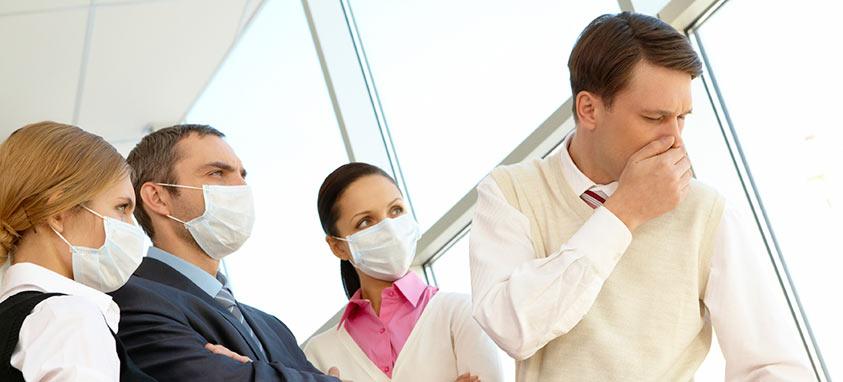If office buildings had physical exams, an alarming number would fail because many are afflicted with sick building syndrome. The Environmental Protection Agency (EPA) estimates that one in four new or renovated indoor buildings in the United States may be classified as sick. Such buildings contain unacceptable levels of dangerous contaminants such as carbon monoxide, carbon dioxide and volatile organic chemicals.
A growing body of scientific evidence blames contaminated offices for causing illness in humans. Minor symptoms range from headaches, itchy eyes, irritability, nausea, dizziness and short-term memory loss, to major problems such as serious nervous and respiratory system damage, and even death. Doctors link the doubling of asthma rates since 1980 to poor quality indoor air.
The EPA believes that indoor air quality poses one of the top five environmental health risks of our time, citing the fact that pollutant levels indoors are two to five times, and occasionally 100 times more concentrated than outdoors. The World Health Organization estimates that one third of the workforce may be subjected to workplaces that are making them sick.
While the federal government has established standards for monitoring industrial workplaces, the Occupational Health & Safety Administration (OSHA) does not have standards in place for monitoring regular office buildings, which is surprising because an alarming number of potential carcinogens can lurk in office high rises.
What in the Office is Making You Sick?
Fluorescent lights can cause eyestrain and headaches, while carpets and the paint on the walls may contain solvents that can irritate the eyes, nose and throat. Chemicals that exist in furniture can release formaldehyde, which has been linked to a wide host of symptoms. Many are sensitive to volatile organic chemicals in office equipment, as well as mold and bacteria found in dirty heating, ventilation and cooling systems.
In many urban high rises, excessive levels of carbon monoxide can be detected inside offices. The hypothesis is that the odorless gas slips into the buildings from parking garages below via air ducts. Without proper ventilation, the poison builds up. In addition, human beings naturally emit carbon dioxide (CO2). Poor ventilation in crowded offices also causes a buildup of CO2 levels. Studies show CO2 concentration levels in meeting rooms frequently exceed acceptable levels by up to 300 percent.
Sick building syndrome is controversial among doctors. Some are dismissive, believing workers are imagining their illnesses. Others, however, warn that sick building syndrome could be the next AIDS. What is clear is that a growing number of employees complaining of health problems are blaming them on their office environments, and the physicians who are treating these patients have seen their caseloads grow 40 percent over the past decade.
The Cost to Businesses
It is also clear that sick building syndrome is costing companies billions of dollars in lost productivity and workers’ compensation claims. In an article for Business Week, Michelle Conlin spoke to researchers William J. Fisk and Arthur H. Rosenfeld of the Lawrence Berkeley National Laboratory in Berkeley, Calif. She quotes them as saying, “U.S. companies could save as much as $58 billion annually by preventing sick building illnesses, and an additional $200 billion in worker performance improvements by creating offices with better indoor air.”
What Can Be Done?
Whether motivated by ethics or the bottom line, a growing number of companies are taking a closer look at how to improve indoor office air. Some are overhauling everything from furniture to lighting, while others are making smaller fixes such as decorating with Boston ferns or palm trees, which are reportedly effective at removing air pollutants. At the very least, workers can make a difference in improving the health of their offices by opening windows and conducting a weekly wipe down of their work spaces using a damp cloth.





